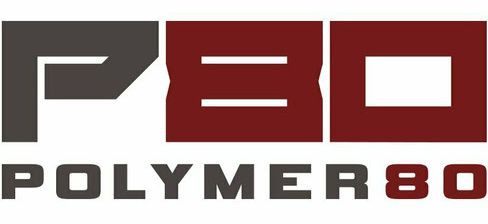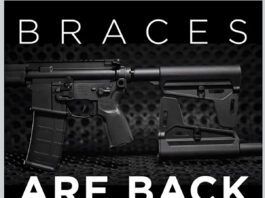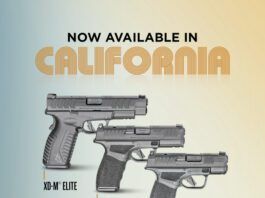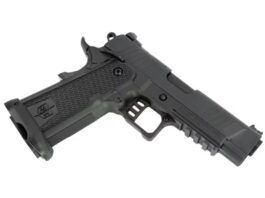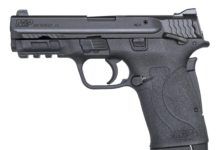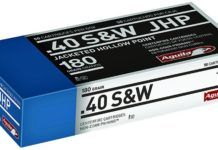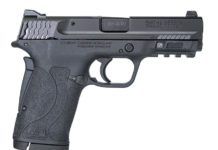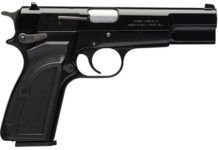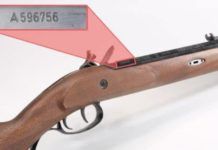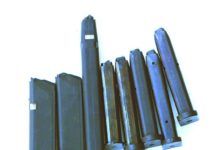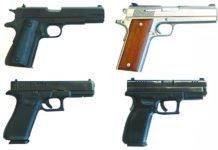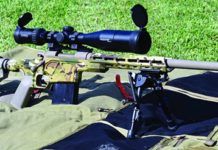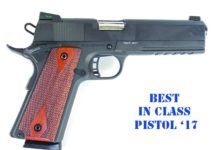No Go Bang Sometimes: M&P 380 SHIELD EZ Manual Thumb Safety
"It seems the function of the M&P 380 Shield EZ Manual Thumb Safety pistol can be influenced by the type and quality of ammunition used with the pistol," said Todd Woodard, Editor of Gun Tests Magazine. "Most gun owners realize that's the case with most firearms.
New Handguns and Ammo for 2018
Gun Tests reporters and editors on the scene at SHOT Show 2018 in Las Vegas scoured the show for new pistol and handgun accessory entries for our readers to consider this year. Amazingly, a handgun made of steel with a design more than 100 years old — the fabled 1911 — still drives the market. A third of the new guns that follow are based on this legendary platform, followed closely by pocket pistols, and it's clear the revolver is not the antiquated firearm many assume. In fact, when it comes to handguns, 2018 is a good mix of old, new, plastic, and steel, with a wheelgun or two thrown in for good measure, along with loads for defensive handgun use to feed these new beasts. Here's a rundown on a few new handgun and ammunition choices for 2018 that our staff thought were notable and which we'll be looking to include in future issues.
S&W’s New M&P380 Shield EZ Pistol Is Supposedly Easy to Use
Smith & Wesson's new M&P380 Shield EZ pistol is a personal-protection and everyday-carry sidearm which is being marketed as easy to use (EZ), a test consideration that Gun Tests Magazine's concealed-carry readers ask about all the time.
Browning Ends Production of Hi-Power Pistol Line for Second Time
Browning has announced that its Hi-Power pistol production has ended, effective EOY 2017. That's a shame, according to Gun Tests Magazine, which has tested various Hi-Powers over the years and found them to be generally effective as concealed-carry weapons (CCW).
Lyman Recalls Black-Powder Rifles and Pistols
Gun Tests has learned that Lyman Products Corp. ("Lyman") is voluntarily recalling black powder rifles and pistols due to the potential of separation in the breech plug.
Non-1911 Magazines: We Test A Passel of Them Head to Head
You can never have enough magazines. Modern pistol shooters practice hard; compete in IDPA, IPSC, and Three Gun matches. They need reliable equipment. Personal-defense shooters need reliable, functional magazines at a fair price. In this installment, we are testing magazines for fit, function, reliability and durability. In common with recoil, striker, and hammer springs, magazines should be replaced from time to time. While new springs may help magazines retain some function, there is a time when cracked or bent feed lips demand the magazine be discarded.
In this test, we followed the same criteria we used in testing 1911 magazines, except this test was more diverse in both handguns and cartridges. The handguns used in the test were proven examples, with few function exceptions. Since the firearms had long-ago proven reliable, there would be no confusion as to which part was responsible for the malfunction, the pistol or the magazine. We also used good-quality ammunition to test the magazines. In each case, we used at least two magazines of each type to bang on.
Using proven criteria and a team of experienced raters, we learned some magazines were durable and service grade; that is, we would be comfortable putting them into "service" in critical situations. We also learned others were okay for range use, but not critical use. In all of these cases, we recommend spending a little more for service-grade magazines across the board for all uses. We don't think it's advisable to mix low performers with high performers in this critical area of function.
Hot Handguns and Cartridges From Springfield, Coonan, Glock
For more than a year, we have been testing and evaluating some of the most powerful and interesting self-loading handgun cartridges. These are the ubiquitous 9mm Luger, which we think has become the baseline against which all other handgun chamberings can be compared, and the far-less-common but still commercially viable 38 Super, 357 SIG, and 357 Magnum, the last of which is chambered in a Coonan handgun. The evaluation was the result of a reader request, and three of which, the 9mm, 38 Super, and 357 SIG, sometimes use the same bullets, but at different velocities.
We began with a number of goals. First, as always, reliability has to be foremost because the handguns were competing as personal-defense choices. We also viewed them as outdoors-carry choices for defense against feral dogs and big cats. We wanted to see how efficiently each cartridge delivered its power, with the idea that the 9mm set the floor. Increased flash, blast, and recoil may be counterproductive in the others, and as it turned out, we got more horsepower with less recoil than expected. The energy difference wasn't incremental; it was profound. We didn't choose average 9mm or 38 Super loads, but instead picked those loads that had given good results in the past. Only the top performers in 9mm and 38 Super are in this report. With the 357 SIG and 357 Magnum, we were on new ground and chose a representative sample of bullet weights. The 357 SIG and 357 Magnum enjoy an excellent reputation for terminal ballistics. The 9mm, less so, and based on previous data, we expected the 38 Super to be as effective or more than a 9mm Luger +P+ load. The primary consideration was personal defense, so control was important. The larger guns may not be ideal for concealed carry, but would be good handguns for field use or home defense. For those wishing to deploy a handgun with plenty of power and accuracy, the 357-caliber self-loaders are easier to control than Magnum revolvers. The self-loaders demonstrate less recoil due to the smaller charge of faster-burning powder and the movement of the action and compression of springs as the handgun is fired. So how would they compare to the revolver? As it turned out, these modern powerhouses outclass the 357 Magnum revolver, in our opinion, on many levels.
We collected a good supply of ammunition, five loads for each gun versus our usual three. We chose three powerful hollowpoint loads for accuracy testing, as is SOP for Gun Tests. We added a fourth load for ballistic testing to test penetration and expansion. We added an economical practice load for use in the combat-firing test phase. So, this was a thorough test requiring several months. We elected not to go lighter than 115-grain bullets in any chambering. The 357 SIG, 38 Super, and 9mm Luger are usually loaded with bullets in the range of 115 to 147 grains. We fired 125-, 140-, and 158-grain bullets in the 357 Magnum Coonan. Here are the results.
Kimber Aegis Pistol Introduction: SHOT Show 2018
Gun Tests Editor Todd Woodard interviews Kimber Creative Lead Rachel Maloney about the company's new Kimber Aegis optics-ready pistol.
We Wouldn’t Buy Ruger or Howa Precision Rifles
When a firearm leaves the factory in a condition that precludes the buyer from using it as designed, that firearm deserves an "F." I believe it is acceptable to point out whether the problem is severe or an easy fix. However, the evaluation needs to stress that the firearm should have never left the factory in the condition tested. Personally, regardless of the grades given, I would not buy the Ruger or the Howa. Keep up the good work.
2017 Guns & Gear Top Picks
Toward the end of each year, I survey the work R.K. Campbell, Roger Eckstine, Austin Miller, Robert Sadowski, David Tannahill, Tracey Taylor, John Taylor, and Ralph Winingham have done in Gun Tests, with an eye toward selecting guns, accessories, and ammunition the magazine's testers have endorsed. From these evaluations I pick the best from a full year's worth of tests and distill recommendations for readers, who often use them as shopping guides. These choices are a mixture of our original tests and other information I've compiled during the year. After we roll high-rated test products into long-term testing, I keep tabs on how those guns do, and if the firearms and accessories continue performing well, then I have confidence including them in this wrap-up.
Big-Bore Autos: Two More 10mms and One 357 Magnum
Other than the 45 ACP, a big-bore automatic means a pistol chambered in 10mm Auto or a less-common caliber. In the recent past, we have tested a few new 10mm pistols and found we liked what they offered. For this test we went to Colt, one of the original manufacturers of the 10mm in the 1911 platform, and acquired one of the company's new Delta Elite pistols. We also went back in time to the early 1990s when the FBI determined they were under-gunned and opted for the 10mm round. We found a used Smith & Wesson Model 1076, which is similar to the FBI Contract Gun, and shot it side by side with the Colt. Then we added a Coonan, which has been around for a number of years, with its claim to fame being a 1911-style platform chambered in magnum revolver calibers. We acquired one of the latest models, the Classic 1911 chambered in 357 Magnum, to pit against the two 10mms from Colt and S&W.
Bottom line is, these are expensive pistols with expensive ammo appetites, but that wouldn't stop us from owning any of these three tested pistols. Any of these pistols are well suited for short-range hunting and personal defense. These pistols are all full-size models with heavy steel receivers, and that is a good thing when firing hot 357 Magnum and 10mm loads. In addition to their weight, another similarity were locked breech actions, where a lug or pair of lugs on the barrel locked into grooves cut on the inside of the slide, similar to a 1911 set up. They also had single-stack magazines and fixed three-dot sights. The triggers on the Coonan and Colt were exceptional. The S&W was heavy, but it still kept pace with the newer pistols.
We tested for accuracy using a rest at 25 yards and found these pistols were well matched in accuracy. Accuracy averaged about 2 inches for five-shot groups. We also practiced double taps at targets set at 10 yards. During that round, we found the 10mm pistols were easier to control than the 357 Magnum pistol.
For ammunition, we used SIG Sauer V-Crown 180-grain jacketed hollow-point bullets and SIG Sauer full-metal-jacket 180-grain bullets. We also used Armscor USA rounds loaded with 180-grain FMJs. The Armscor clocked about 100 fps less than the SIG ammo. We've noticed that SIG is loading 10mm ammo hotter. Many factory loads in 10mm are light and do not bring out the true potential of the 10mm round. The 357 Magnum rounds consisted of SIG Sauer V-Crown 125-grain JHPs, Aguila 158-grain semi-jacketed hollow points, and Winchester PDX1 Defender 125-grain JHPs. We had issues with the Winchester ammo in the Coonan, which we will get into below. Here are details about how each gun performed.
Surplus 1911s Might Be Back
The U.S. House of Representatives has passed H.R. 2810, the National Defense Authorization Act (NDAA) for Fiscal Year 2018. Included in the bill is a provision that would make U.S. Army surplus 1911 45 ACP pistols available to the American public through the Civilian Marksmanship program (CMP), according to an NRA release. In November 2015, then-President Obama signed the NDAA for Fiscal Year 2016 into law with language that authorized the Secretary of Defense to transfer 1911s no longer in service to the CMP for public sale. That language made the transfers subject to the Secretary's discretion and capped them at 10,000 per year. Unsurprisingly, no actual transfers were made under the program while Obama remained in the White House.

























